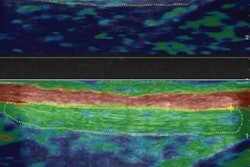
Germans of lower socioeconomic status have more than twice the risk of developing cardiovascular disease than the better-off -- and the differences may have widened in recent years, according to new research from Berlin presented at the 2015 European Society of Cardiology (ESC) meeting in London.
A group from the Robert Koch Institute in Berlin examined whether there are social inequalities in the lifetime prevalence of cardiovascular disease in Germany, and whether there were any changes in the relationship between 1998 and 2010. The results suggest the inequalities remained stable among women and worsened among men, noted epidemiologist Dr. Markus Busch and colleagues in an ESC 2015 poster presentation.
"Social inequalities in cardiovascular disease and risk factors have been reported in many counties, but very little is known whether these social inequalities have increased or decreased in recent years," the authors wrote.
The study was a time-trend analysis using data from two adult populations in Germany who participated in the German National Health Interview and Examination Surveys in 1997-1999 and 2008-2010, and had self-reported lifetime diagnosis of myocardial infarction, stroke, or congestive heart failure.
The analysis looked at diagnosis in combination with socioeconomic status and a range of variables. Socioeconomic status included data based on education, income, and occupational status, stratifying respondents into low, medium, and high. The authors used logistic regression models for analysis that allowed adjustments for socioeconomic status and covariables.
The results showed the overall prevalence of major cardiovascular disease was similar in 1998 (14.5%) and 2010 (14.4%).
Within the data, however, there were differences between the two time periods, they said.
The age-standardized lifetime prevalence of cardiovascular disease dropped from 13.9% in 1998 to 11.3% in 2010 among women. But the rate did not change significantly among men, where it stood at 16% in 1998 and 17.5% in 2010 (p = 0.2).
Moreover, in 2010 the prevalence of major cardiovascular disease was significantly higher among women of lower socioeconomic status (17%) versus high (5.2%) and among lower socioeconomic status men (24.1%) versus high (12.8%).
| Association between socioeconomic status (SES) and prevalence of major cardiovascular disease in 2010 | ||
| Men | Women | |
| Odds Ratio | Odds Ratio | |
| Low SES | 2.02 | 2.18 |
| Medium SES | 1.35 | 1.78 |
| High SES | Reference | Reference |
| Negative index of inequality (R11) | 2.11 | 2.61 |
| Prevalence of major cardiovascular disease in women by age group and SES | |||
| 1998 | 2010 | ||
| Women | 52.5% | 50.8% | |
| Age group | 40-54 years | 43.7% | 46.9% |
| 55-64 years | 29.6% | 29.4% | |
| SES | Low | 21.1% | 20.1% |
| Medium | 58.0% | 59.7% | |
| High | 20.8% | 20.2% | |
After adjusting for behavioral risk factors such as smoking, drinking, and exercise levels, the adjusted prevalence rose by an additional 3.2% among men of low and medium socioeconomic status, while decreasing by 4.6% of men of high socioeconomic status, the team reported.
Then, after adjusting for the same behavioral risk factors among women, the total prevalence of dropped by about 3% for all socioeconomic groups (p for survey SES > 0.1).
"Between 1998 and 2010, socioeconomic inequalities in [cardiovascular disease] prevalence remained stable among women and increased among men," Busch and colleagues wrote. "These levels remained materially unchanged after controlling for differences in behavioral risk factors in the statistical analysis."



















